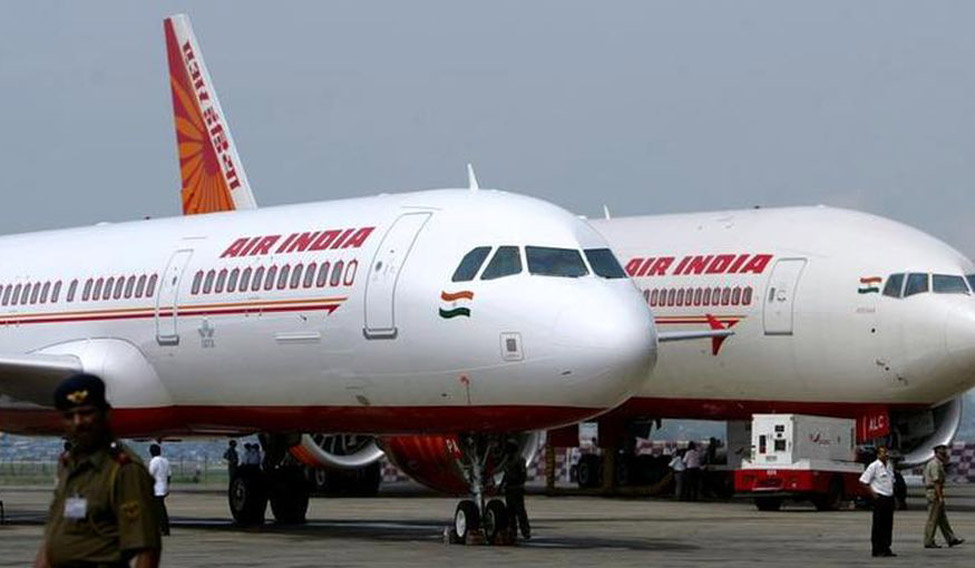The loss-making Air India’s privatisation effort is on full swing except one crucial hitch: lack of buyers.
The government, however, is showing no signs of worry. It has roped in investment bank SBI Caps to advise on the future course of disinvestment, and Air India is constituting as many as five teams to work on various aspects of the stake sale process.
The national air carrier has a debt burden of more than Rs 50,000 crore. The debt is almost the size of the government’s recent growth stimulus package to boost small and medium scale companies.
As of now, Indigo Airlines has shown interest to acquire Air India’s international operations, and the Tatas have conveyed to the ministry of civil aviation and the Prime Minister’s Office (PMO) that they were keen to acquire stake in the beleaguered airline.
Indigo has made its intentions clear, the Tatas haven’t. And there are mere rumours in the corridors of the civil aviation ministry that two separate entities want Air India’s ground handling business. The government cannot seek an auction because it would require at least two to three competing players to discover the true value.
Tata Sons’ chairman N. Chandrasekaran—in his last public interaction—has made it clear that the group’s willingness will depend purely on hardcore business factors, and not on emotional connect the Tatas have always had with the aviation business.
Air India was originally a Tata company, launched by the legendary JRD Tata in 1923 and helmed by him for years before the government’s abrupt nationalisation in 1953. The Tatas were again the frontrunners along with the Singapore Airlines when the government first tried to privatise the airlines in 2001. However, dirty politicking in the Indian capital had stalled the process then. Now, Air India is wholly owned by the government and, the Tatas are careful.
Mandarins of Bombay House—the headquarters of the Tatas—have made it clear that their decision will depend on the government’s stance on lifting the foreign direct investment (FDI) caps in the sector, whether such an acquisition will provide scale to the Tatas in aviation and the future growth potential in the sector after this buy. Tatas have two separate airline ventures in India, one in partnership with Singapore Airlines (Vistara, in which SIA holds 49 per cent stake) and Air Asia India (the Malaysian partner again holds 49 per cent stake). If Air India comes to the Tata fold, the company could gain instant market leadership.
There are other issues. The NDA government has not specified how much stake would be on the table, whether foreign airlines will at all be allowed to participate in the sale process. And more importantly, if all of Air India’s Rs 50,000-crore debt will have to be borne by the buyer. Worse, a few cabinet ministers in the NDA have already indicated they would like Air India to remain in Indian hands.
In the latest consolidated FDI circular in August, the government maintained a 49-per cent cap for foreign airlines wanting to invest in the capital of Indian carriers but clarified that this part of the policy is not applicable to Air India. Unless the exemption is removed, the bidders can be only Indian companies. And then, Tatas cannot partner with Singapore Airlines for a potential bid, though the same can be made via Vistara.
The government’s decision of not allowing foreign carriers to bid for Air India stems from the fear of adverse political opposition the government might face from unions if the country’s crown jewel is sold to a foreign carrier. This government cannot ignore that, ostensibly because the Lok Sabha elections are due in 2019.
The issue of debt is also an important one and perhaps the toughest for the government to settle before it puts Air India on the block. The NDA, rather the PMO, must decide how much to write off before asking the bidders to pick up the bid documents.
Air India chairman and managing director Rajiv Bansal said the teams constituted will help government “sell the airline within a stipulated time frame”. Though Bansal did not specify the time limit, it is reliably learnt that the civil aviation ministry hopes to seal the deal by the fall of 2018. SBI Caps would prepare 3-5-year business plans for five subsidiary companies of Air India to be divested, help obtain approvals from the consortium of banks for the transfer of real estate properties and other securities.
A previous UPA turnaround plan—actually a decade-long bailout package starting from 2012—had guaranteed Rs 30,231 crore subject to Air India meeting certain performance thresholds. The Air India group has operations in 42 international destinations and over 70 domestic stations. It has an operating fleet of 142 aircraft.
The government hopes to get Rs 20,000 crore of loan secured against assets (the aircraft). And then, the valuation of the company, which includes, apart from the planes, its international slots and routes, should total it Rs 30,000 crore. That means, in a nutshell, the government still needs to write off at least Rs 20,000 crore of loans to make the bid sweet and attractive.
Now, the billion-dollar question remains: will there be a single buyer ready to take over about Rs 30,000 crore of debt, and an estimated 20,000 employees of Air India? It is a herculean task—especially at a time when the trade unions are up in arms against the proposed sale—and eventually, it all revolves around who comes first to pick up the bid documents.





